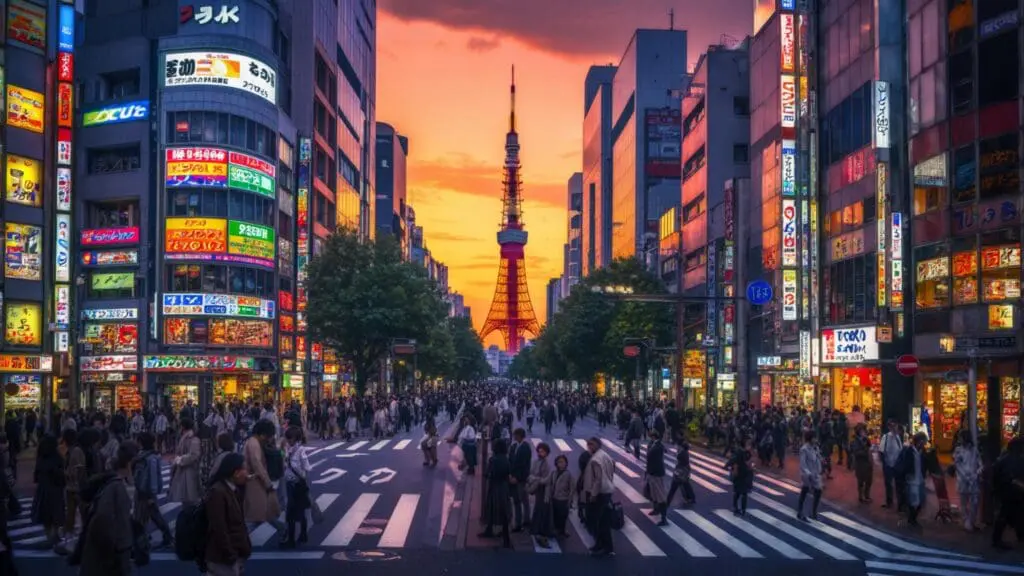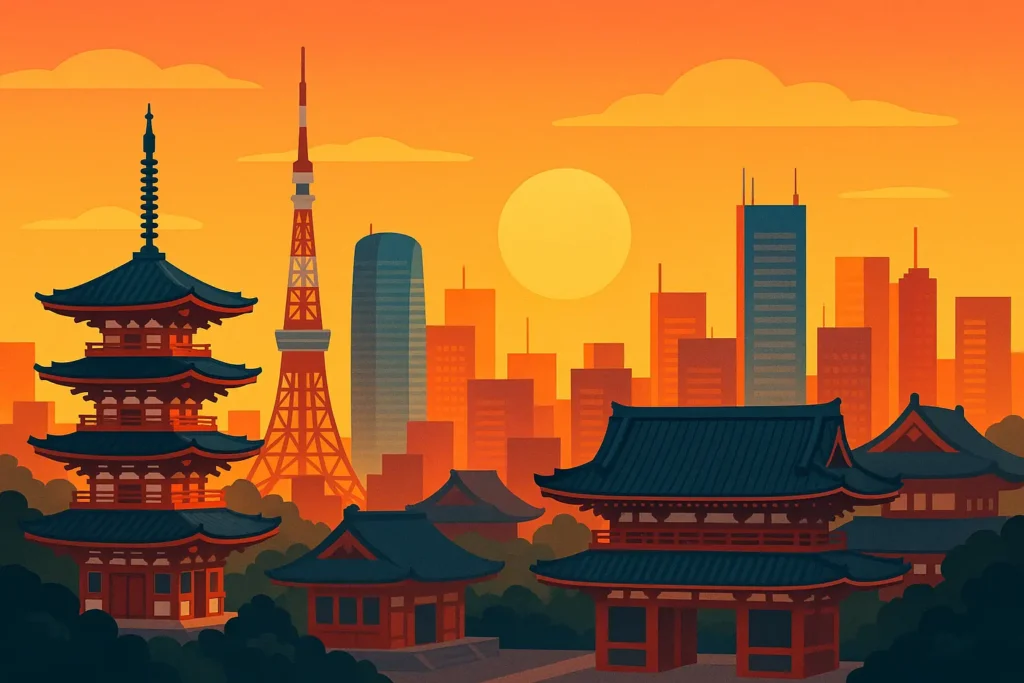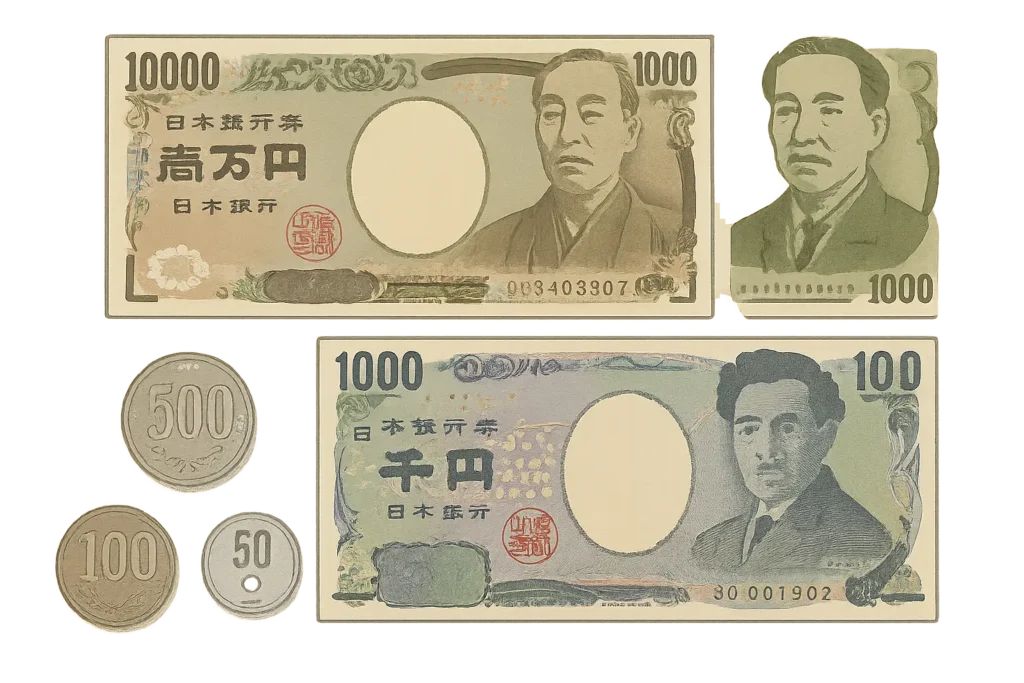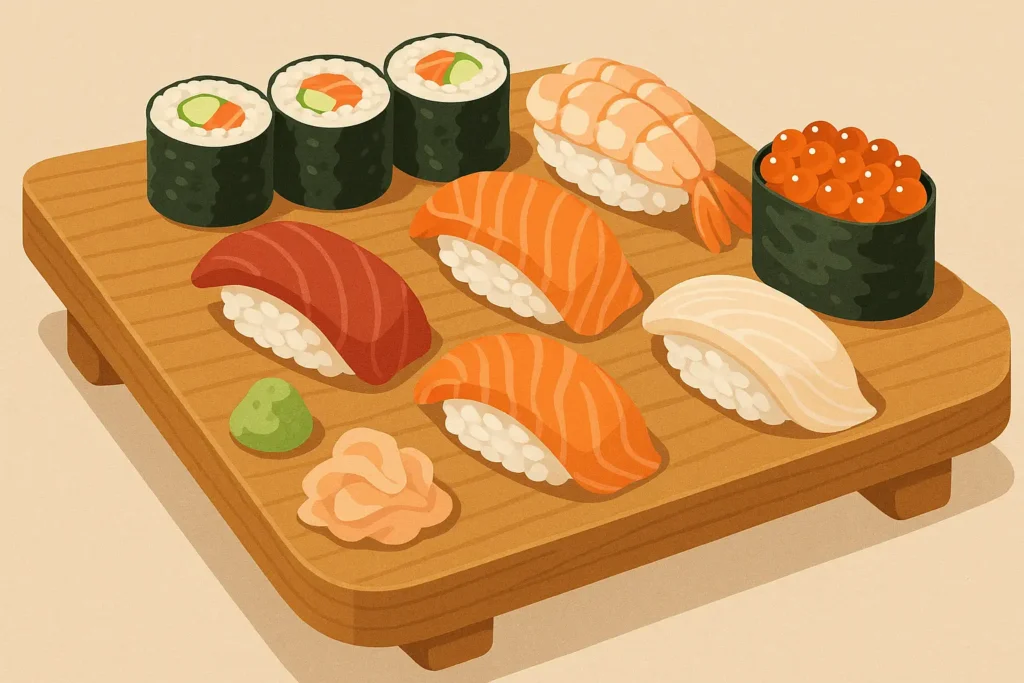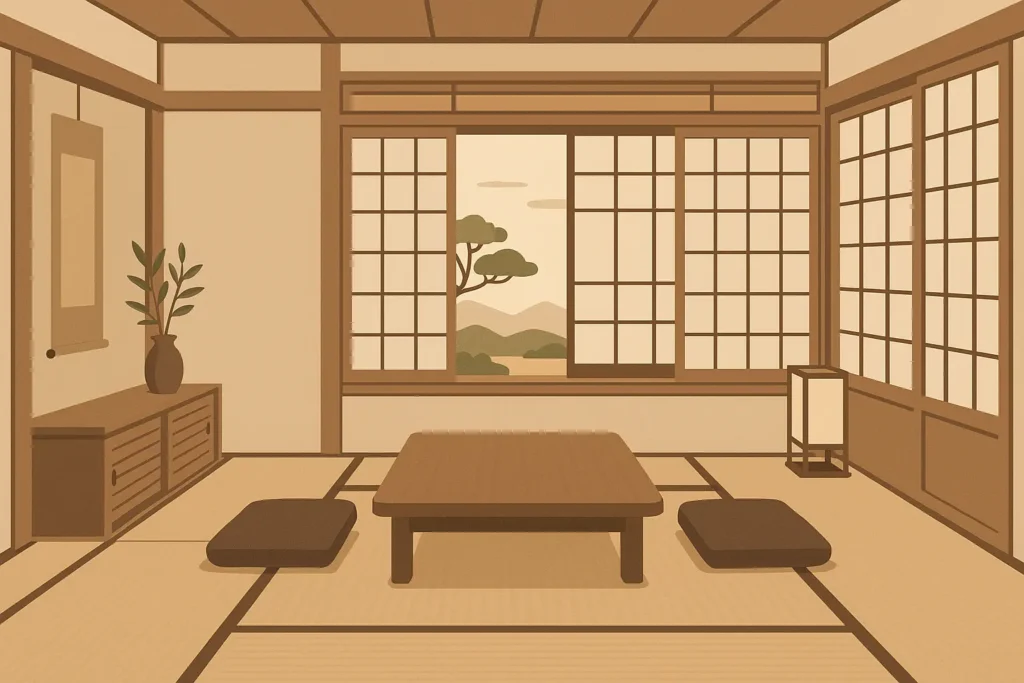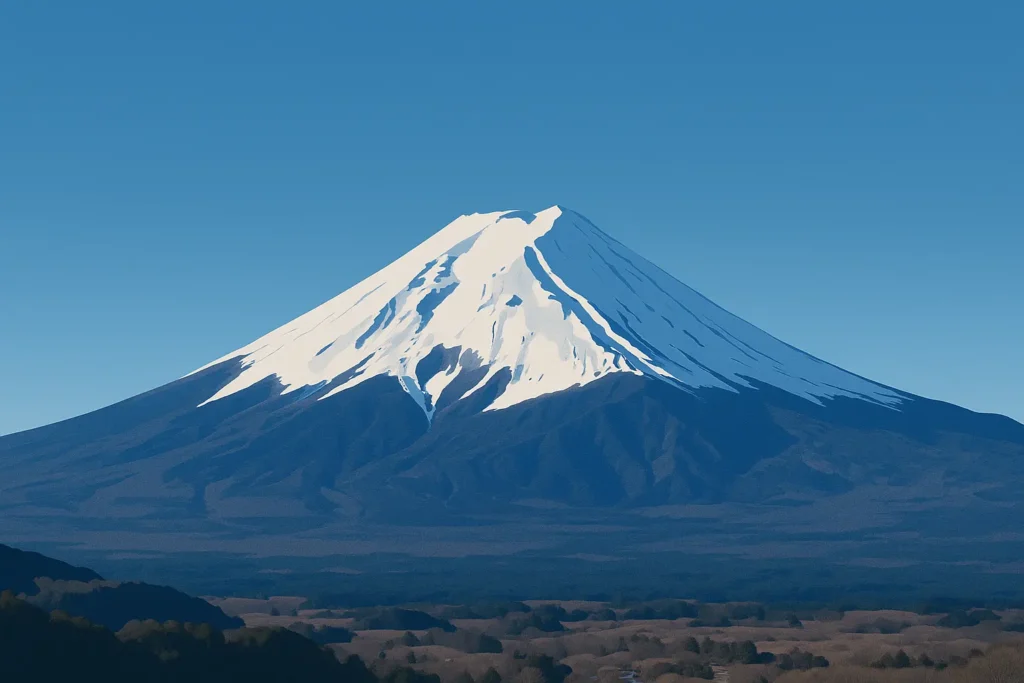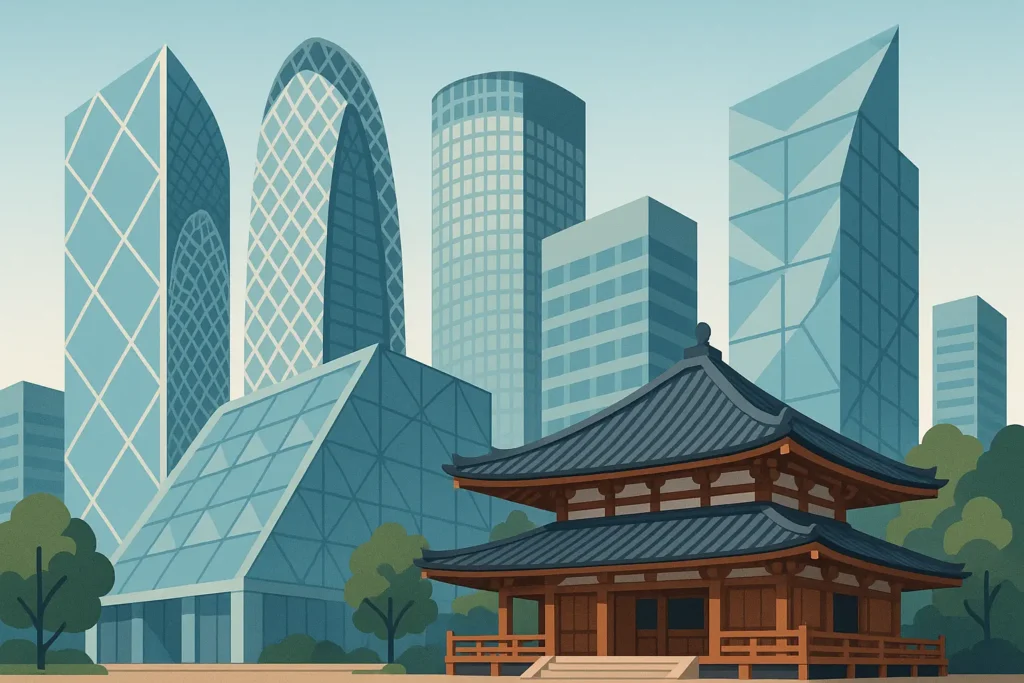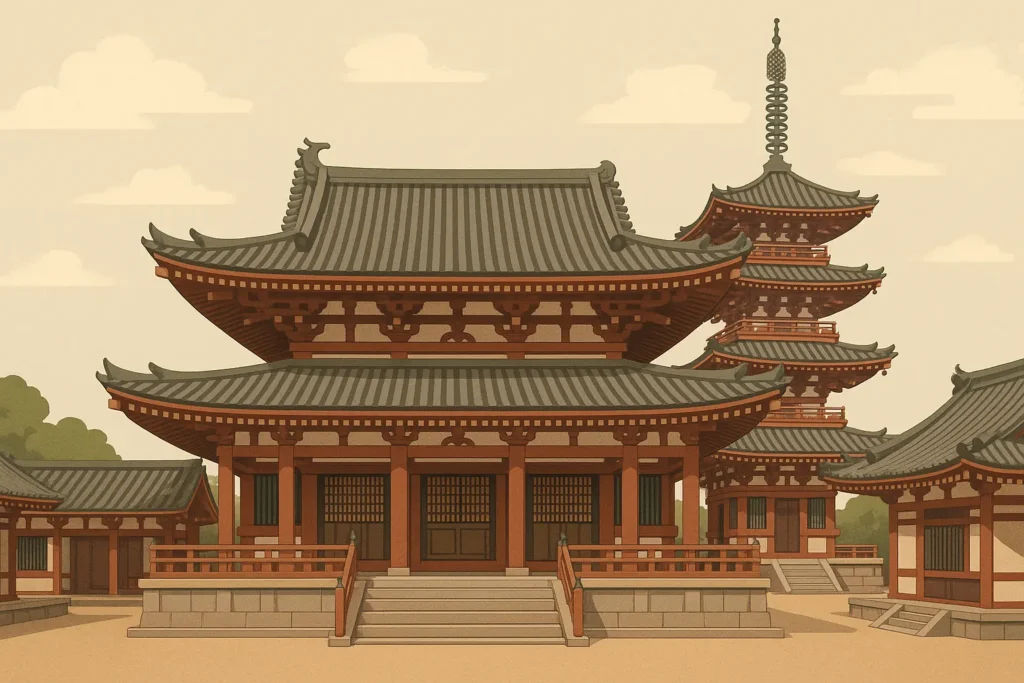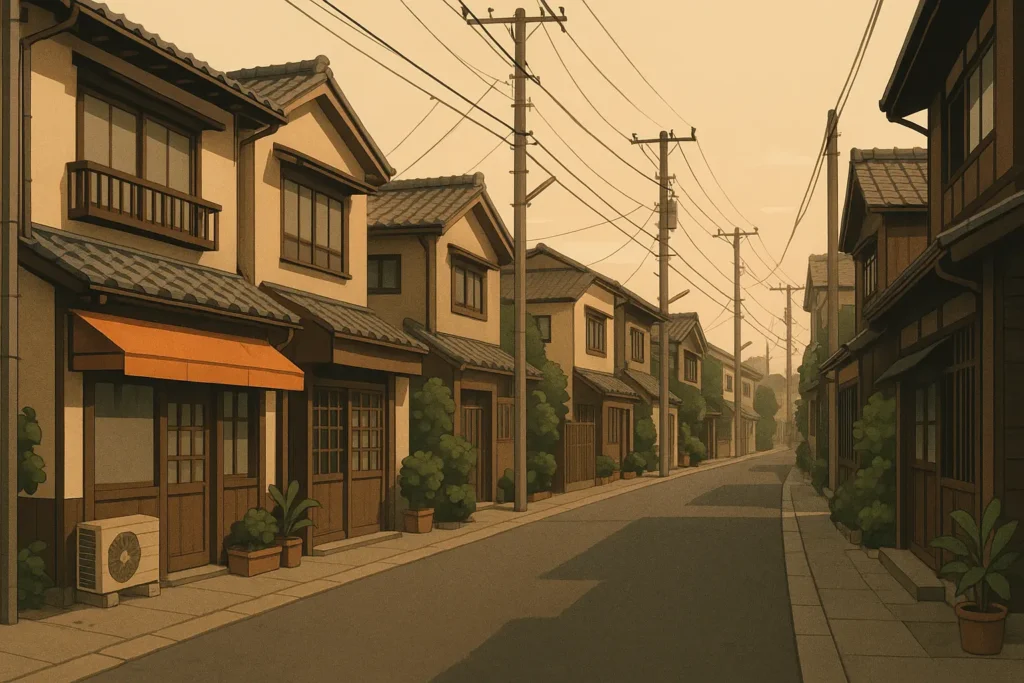Tokyo’s metropolitan area houses more than 37 million people across 2,194 km² – almost double the size of New York City. There’s nothing else on earth like it. I discovered this firsthand during my first visit when I naively planned just three days for what I thought would be a quick city tour. That “quick tour” turned into multiple return trips as I realized I’d barely scratched the surface of this incredible metropolis. Oh, and I spent most of day one completely lost in Shinjuku Station. Fun times.
Make your Tokyo planning simple with our Vacation Planner — build your perfect itinerary without the overwhelm.
Quick Resources:
-
Build your perfect Japan adventure with our Vacation Planner
-
Plan your Tokyo destination wedding or honeymoon seamlessly using the AI Wedding Planner
-
Get expert help anytime through the Free 24/7 Wedding Hotline
-
Discover all our organization and celebration tools at All Wedding Tools
Planning a tokyo itinerary feels overwhelming because the city defies simple categorization. You’re deciding between ancient temples and robot cafes, traditional ryokans and capsule hotels, serene gardens and neon-lit districts that never sleep. Each neighborhood offers completely different experiences, and honestly, the sheer number of options can make your head spin.
I’ve put together 25 tokyo itinerary options organized across six different categories to help you navigate this incredible (and incredibly complex) city. Whether you have 48 hours or two weeks, prefer traditional culture or modern pop experiences, travel solo or with family, there’s something here that’ll work for your travel to tokyo adventure.
TL;DR (Because I Know You’re Excited to Start Planning)
- Tokyo needs at least 5 days to do it right – shorter trips mean you’ll be running around like crazy
- You can spend anywhere from $50-300+ daily (I’ll be honest, you’ll probably spend more than you planned)
- Group dynamics matter big time – solo travelers can wing it, families need serious planning
- Cherry blossom season is gorgeous but prepare for crowds that’ll make you question your life choices
- Master the trains or suffer – IC cards are your friend, JR Pass helps if you’re doing multiple cities
- Learn basic etiquette – it shows respect and people really appreciate it
- Download Google Translate with camera function. Trust me on this one.
- Book popular attractions in advance or prepare for disappointment
Essential Planning Considerations for Your Tokyo Adventure
Before we dive into specific itineraries, let me share some hard-earned wisdom about what actually matters when planning a successful Tokyo trip. Because let’s face it, there’s a lot of advice out there, and not all of it is helpful.
Planning your perfect celebration requires the same attention to detail as crafting a comprehensive wedding timeline, ensuring every moment flows seamlessly from arrival to departure.
Keep every Tokyo moment perfectly coordinated with our AI Wedding Planner — your ultimate trip organization tool.
Here’s the thing about Tokyo – successful tokyo itinerary planning comes down to five crucial factors: how long you’re staying, how much you can spend, what kind of traveler you are, who you’re traveling with, and getting the practical stuff sorted. Each of these will completely change what you can realistically do and how you should structure your days.
Structure your Tokyo itinerary like a pro using the Vacation Planner — plan smarter, travel smoother.
Duration and Timing Impact (aka How Much Can You Actually Handle?)
Your trip length dramatically determines what you can accomplish. Three days requires ruthless prioritization of must-see highlights, while ten days allows you to actually breathe and discover those hidden gems everyone talks about.
| Trip Duration | What You Can Actually Do | Reality Check | The Good News |
|---|---|---|---|
| 2-3 Days | Hit the highlights, feel rushed | You’ll barely scratch the surface | Quick taste, won’t break the bank |
| 5-7 Days | Good mix of everything | Still can’t see it all | Manageable pace, real cultural experiences |
| 10-14 Days | Deep dive + day trips | Expensive, planning intensive | Authentic experiences, flexibility to mess up |
Look, seasonal considerations matter enormously. Cherry blossom season (March-May) is absolutely stunning, but the crowds are insane and everything costs more. I learned this the hard way when I paid $200 for a hotel room that normally costs $80. Winter gives you clearer Mount Fuji views and fewer tourists, but it’s cold. Really cold.
Summer offers festivals but the heat and humidity will drain you faster than you’d expect. I spent one July afternoon hiding in a 7-Eleven just to cool down. Don’t underestimate how much the weather affects your sightseeing pace.
Budget Parameters That Shape Experience (Let’s Talk Real Numbers)
Tokyo accommodates various budgets, from backpacker-friendly to “I just spent $500 on dinner and it was worth it” experiences. Daily costs vary dramatically based on where you sleep, what you eat, and what you do.
Realistic daily budgets range from $50 for budget backpackers to $300+ for luxury travelers. Most people end up spending $100-150 daily, which gives you decent comfort without going broke.
The beauty of Tokyo is that you can have incredible experiences at any budget level. Some of my most memorable moments happened at free temples and parks, while others required splurging on once-in-a-lifetime dining experiences. That $30 I spent on a single piece of fruit at a department store? Totally worth it for the cultural education.
Travel Style and Interest Alignment (Know Yourself)
Are you drawn to traditional culture, modern pop culture, food adventures, shopping, nightlife, or nature? This shapes everything about where you’ll go and what you’ll do.
Consider your energy levels and walking tolerance – Tokyo involves A LOT of walking. I’ve seen people burn out by day three because they tried to pack too much in without considering their personal limits. If you’re anything like me and need quiet moments for reflection, build those into your schedule.
Group Dynamics Considerations (This Gets Complicated)
Solo travelers enjoy maximum flexibility and can adapt plans on the fly. Couples need romantic elements and shared experiences (and will definitely disagree about where to eat – I have a survival guide for this). Families require kid-friendly activities, manageable walking distances, and strategic snack planning.
Multi-generational groups? Good luck. You’ll need accessible transportation, varied activity pacing, and the patience of a saint. But seeing Tokyo through different generations’ eyes is pretty magical.
Practical Logistics Mastery (The Stuff That Actually Matters)
Language barriers, navigation complexity, cultural etiquette, and booking requirements all impact your itinerary. Consider jet lag recovery time and build flexibility for unexpected discoveries (and mistakes).
Real-World Navigation Example: Sarah, a first-time visitor, downloaded Google Translate with camera function and Hyperdia for train schedules. When she got completely lost in Shinjuku Station (happens to everyone), she used the camera feature to translate directional signs and actually made it to her destination. This preparation turned a potential meltdown into a manageable experience.
Download translation apps, learn basic cultural customs, and research advance booking requirements. Your future self will thank you.
Make trip coordination effortless with the AI Wedding Planner — organize logistics, timelines, and bookings all in one place.
Duration-Based Itineraries
These itineraries focus on maximizing your time based on how long you can stay in Tokyo, from express visits to extended explorations.
Duration-based itineraries help you optimize your time, whether you’ve got a quick weekend or a full two weeks to explore. Each timeframe requires different strategies – from hitting only the absolute must-sees to diving deep into neighborhoods and really getting a feel for the city.
1. Express Tokyo (2-3 Days)
Perfect for business travelers or those with limited time who want to say they’ve “done” Tokyo (even though you really haven’t).
Day 1: Arrive and head straight to Shibuya Crossing for the famous scramble (prepare for sensory overload), explore Harajuku’s youth culture and street fashion, then visit Meiji Shrine for some spiritual balance. Your feet will hurt by evening.
Day 2: Start at Tsukiji Outer Market for the freshest sushi breakfast of your life, visit Imperial Palace gardens (actually peaceful), explore Ginza’s luxury shopping (window shopping counts), and end with Tokyo Skytree’s panoramic views. Pro tip: the key here is accepting that you’ll get a taste rather than a deep dive.
Day 3: Experience Senso-ji Temple’s ancient atmosphere, browse Nakamise shopping street for souvenirs, and prepare for departure while already planning your return trip.
2. Classic First-Timer (5-7 Days)
This is the sweet spot for most people – enough time to experience different sides of Tokyo without feeling completely overwhelmed.
Day 1: Handle arrival and Shibuya orientation. Don’t plan anything major – jet lag is real and you’ll probably spend half the day figuring out how trains work.
Day 2: Explore traditional Tokyo through Asakusa district and Senso-ji Temple. Take a traditional craft workshop if you’re feeling ambitious.
Day 3: Modern Tokyo via Ginza luxury shopping, Tokyo Station architecture, and Imperial Palace gardens. This is where you’ll start to understand the city’s contrasts.
Day 4: Pop culture dive through Harajuku fashion, Akihabara electronics, and themed cafes. Prepare for sensory overload and embrace the weirdness.
Day 5: Culinary adventure featuring Tsukiji market, cooking classes, and izakaya crawls. You’ll eat things you can’t pronounce and love most of them.
Day 6: Day trip options to Nikko or Kamakura for nature and temples. A nice break from the city intensity.
Day 7: Shopping and final experiences, revisiting favorite areas. You’ll realize you need another week.
3. Extended Explorer (10-14 Days)
This is where Tokyo really opens up to you, and you start to feel like you might actually understand the place.
Spend 2-3 days each in major districts, allowing time to discover hidden gems and develop actual neighborhood familiarity. Include multiple day trips to Mount Fuji, Hakone hot springs, Nikko UNESCO sites, and Kamakura temples.
Attend seasonal festivals, take cooking classes, experience traditional accommodations, explore lesser-known neighborhoods like Yanaka and Kagurazaka. This timeframe lets you move beyond tourist experiences into genuine cultural understanding. You’ll start having favorite local spots and maybe even recognize some faces.
4. Weekend Warrior (2 Days)
For quick getaways or business trip extensions when you just can’t resist experiencing Tokyo, even briefly.
Friday evening: Arrive and experience Shibuya nightlife. Jump in headfirst – the city’s energy is infectious.
Saturday: Hit Tsukiji for dawn sushi (worth the early wake-up), visit Imperial Palace gardens, explore Ginza shopping, and end in Roppongi for evening entertainment.
Sunday morning: Experience Senso-ji Temple before departure. Allow time for final souvenir shopping and the inevitable “I need more time here” realization.
Interest-Based Itineraries
These itineraries cater to specific passions and interests, allowing deep dives into particular aspects of Tokyo culture and experiences.
If you’re passionate about specific aspects of Japanese culture, these focused itineraries let you dive deep while still getting a well-rounded Tokyo experience. From food adventures to pop culture immersion, each approach balances your interests with essential Tokyo experiences.
5. Culinary Connoisseur
This food-focused journey spans 7-10 days exploring Tokyo’s incredible dining scene from street food to Michelin stars. Fair warning: you’ll gain weight and not care.
Begin with Tsukiji Outer Market for the freshest sushi breakfast of your life. This is where you’ll understand why people get so excited about Japanese food culture.
Progress through neighborhood food tours in Shinjuku’s Memory Lane, experiencing authentic izakaya culture where salarymen unwind after work. Take ramen-making classes in Shibuya – turns out there’s actual technique behind those perfect noodles.
Experience high-end kaiseki in Ginza to understand the artistry of traditional Japanese cuisine. The progression from street food to haute cuisine gives you the full spectrum of Tokyo’s culinary evolution.
Explore sake breweries, attend cooking workshops, visit food markets, and conclude with Michelin-starred dining that’ll ruin regular restaurants for you forever.
6. Pop Culture Enthusiast
Dive deep into Japan’s modern cultural exports through anime, manga, gaming, and youth fashion over 5-7 days. Embrace the weirdness.
Explore Akihabara’s electronics and anime culture – it’s like stepping into a different world. Visit multi-story manga stores and gaming centers where you’ll lose track of time.
Experience Harajuku’s street fashion and youth culture, including themed cafes that are exactly as bizarre as you’ve heard. Visit Studio Ghibli Museum for animation artistry (book tickets in advance or cry later).
Explore gaming centers and arcades, experience unique entertainment like robot restaurants and maid cafes. Yes, they’re touristy. Yes, they’re also uniquely Tokyo and kind of amazing.
7. Traditional Culture Seeker
Immerse yourself in Japan’s rich heritage through temples, traditional arts, and cultural practices over 7-10 days.
Visit major temples (Senso-ji, Meiji Shrine) and participate in traditional arts workshops including calligraphy, pottery, and tea ceremony. Experience sumo wrestling events and kabuki theater if you can get tickets.
Cultural Immersion Success: Maria spent three hours at a traditional tea ceremony workshop. Despite initial nervousness about proper etiquette, the instructor’s patient guidance helped her understand the spiritual aspects behind each movement. She left with deeper appreciation for Japanese mindfulness practices and confidence to participate respectfully in cultural activities throughout her trip.
Stay in traditional ryokans, explore historical neighborhoods like Yanaka, and visit traditional craft workshops. The contrast with modern Tokyo is striking and helps you understand how the city balances tradition with innovation.
8. Shopping Enthusiast
Navigate Tokyo’s diverse shopping landscape from luxury boutiques to vintage finds over 5-7 days. Your wallet will hate you.
Explore Ginza for luxury international brands and flagship Japanese stores where customer service reaches art form levels. Discover Harajuku’s youth fashion and unique accessories you won’t find anywhere else.
Experience Shibuya’s mainstream shopping and department store culture. Visit Akihabara for electronics and tech gadgets that aren’t available in your home country.
Explore traditional markets for unique finds and vintage shopping in Shimokitazawa’s eclectic boutiques. Learn about Japanese design philosophy and discover emerging designers who’ll be famous in five years.
9. Nightlife Explorer
Tokyo’s after-dark scene offers incredible diversity from mega-clubs to intimate jazz bars over 5-7 days. The city truly never sleeps.
Explore Shibuya’s mega-clubs and youth-oriented nightlife where the energy is infectious. Experience intimate jazz bars in Ginza and rooftop bars with city views that’ll take your breath away.
Navigate Shinjuku’s Golden Gai for tiny themed bars where you’ll have conversations you never expected. Each bar fits maybe six people and has its own personality.
Enjoy karaoke experiences (it’s not optional in Tokyo), late-night ramen shops, and 24-hour entertainment areas. Learn karaoke etiquette – yes, there are rules, and yes, people care about them.
Budget-Focused Itineraries
These itineraries optimize experiences across different budget ranges, proving Tokyo can accommodate various financial constraints without sacrificing memorable experiences.
Look, Tokyo can be expensive, but it doesn’t have to break the bank. These budget-focused approaches show you how to maximize experiences at different spending levels, from backpacker-friendly to full luxury.
| Budget Level | Daily Cost | Where You Sleep | What You Eat | How You Get Around | What You Do |
|---|---|---|---|---|---|
| Budget | $30-50 | Hostels/Capsules | Convenience stores | Day passes | Free stuff mostly |
| Mid-Range | $100-150 | Business hotels | Mix of everything | Flexible | Selective splurging |
| Luxury | $300+ | Premium hotels | High-end everything | Whatever you want | Exclusive experiences |
10. Budget Backpacker (Under $50/day)
Maximize experiences while minimizing costs through smart choices and local knowledge. It’s totally doable if you’re strategic.
Stay in hostels or capsule hotels ($15-25/night) – capsule hotels are uniquely Japanese and surprisingly comfortable. Eat at convenience stores and budget restaurants ($10-15/day) – convenience store food in Japan is actually amazing.
Use day passes for transportation ($8-12/day) and visit free attractions like temples, parks, and observation decks. Participate in free walking tours an d cultural exchanges where you’ll meet other travelers and locals.
Use apps for discounts and pack lunches for day trips. Take advantage of happy hour specials, explore free museums on designated days, and prioritize experiences over material purchases. Shop at 100-yen stores for souvenirs and use free WiFi throughout the city – it’s everywhere.
11. Mid-Range Explorer ($100-150/day)
This is the sweet spot – balancing comfort with cost-consciousness while experiencing Tokyo’s diverse offerings without constantly checking your bank account.
Stay in business hotels with convenient locations and decent amenities. Mix restaurant meals with convenience store options for variety and savings – nobody judges you for eating 7-Eleven onigiri for breakfast.
Select paid attractions strategically while enjoying free experiences. Use comfortable transportation choices without splurging on premium options. Allow occasional splurge experiences because some things are worth it.
This budget level provides comfort and convenience while still requiring thoughtful spending decisions. You can eat well, sleep comfortably, and see most of what you want without financial stress.
12. Luxury Experience ($300+/day)
Go all out and enjoy Tokyo’s finest offerings without budget constraints. Life’s short, and Tokyo’s luxury experiences are world-class.
Stay in premium hotels like Park Hyatt or Aman Tokyo where the service will spoil you for life. Dine at Michelin-starred restaurants and exclusive establishments where reservations are harder to get than concert tickets.
Enjoy private guided tours and VIP cultural experiences. Use premium transportation options, shop at high-end boutiques, and access exclusive performances and events.
Book private sake tastings, spa treatments, and unique cultural activities. At this budget level, Tokyo becomes your personal playground with access to experiences most people only dream about.
Group-Specific Itineraries
These itineraries address the unique needs and dynamics of different group compositions while maximizing enjoyment for all participants.
Understanding group dynamics is essential for successful travel planning, much like coordinating bridesmaid group communications requires different approaches for different personalities.
Simplify group coordination (and avoid travel chaos) with our Free 24/7 Wedding Hotline.
Different travel groups need completely different approaches. Solo travelers can wing it, couples will argue about restaurants, families need strategic planning, and multi-generational groups… well, good luck with that.
13. Solo Traveler Adventure
Designed for independent exploration with safety and social opportunities in mind over 5-7 days. Solo travel in Tokyo is incredibly safe and surprisingly social.
Focus on walkable neighborhoods and include group tours for social interaction. Stay in well-connected areas with flexible schedules allowing spontaneous discoveries – this is where solo travel really shines.
Include solo-friendly dining options like counter seating at ramen shops and sushi bars where you can watch the chefs work. Consider language exchange meetups and photography opportunities.
Build in downtime for reflection and planning. Embrace the freedom to change plans based on personal discoveries and interests. You’ll probably have conversations you never would have had in a group.
14. Romantic Couples Getaway
Create intimate experiences and shared memories through romantic Tokyo settings over 5-7 days. Tokyo is surprisingly romantic when you know where to look.
Include sunset views from Tokyo Skytree, couples spa experiences, and intimate dining in Ginza’s sophisticated restaurants. Plan cherry blossom viewing during appropriate seasons – it’s cliché but incredibly beautiful.
Experience traditional ryokan stays, private cultural activities, and scenic day trips to Hakone for hot springs and Mount Fuji views. Focus on creating shared memories through unique experiences while allowing time for relaxation.
Pro tip: You will disagree about where to eat. Have a plan for this. Rock-paper-scissors works surprisingly well.
15. Family with Children
Plan child-friendly activities while introducing cultural experiences appropriate for young travelers over 5-7 days. Kids see Tokyo differently, and their perspective is pretty amazing.
Include Tokyo Disneyland/DisneySea (non-negotiable with kids), interactive museums, parks and playgrounds, and kid-friendly restaurants with familiar options alongside cultural introductions.
Choose accommodation with family rooms, plan manageable walking distances, and schedule rest times. Kids get overwhelmed faster than adults in Tokyo’s sensory overload environment.
Include educational opportunities and cultural experiences adapted for children’s attention spans. Pack snacks strategically – hangry kids in Tokyo crowds are nobody’s friend.
16. Multi-Generational Groups
Accommodate varying interests, mobility levels, and energy across different age groups over 7-10 days. This requires patience and careful planning.
Plan accessible transportation options and varied activity pacing. Include diverse dining preferences and cultural bridge-building experiences that appeal to different generations.
Consider health and mobility requirements, provide comfortable accommodation for all ages, and create opportunities for different generations to share experiences. Balance active exploration with relaxation time – grandparents and teenagers have very different energy levels.
Seasonal Itineraries
These itineraries optimize experiences based on Tokyo’s distinct seasons, each offering unique advantages and considerations for travelers.
Tokyo’s seasons are dramatically different, and timing your visit right can make or break your experience. Each season offers unique experiences, but also comes with its own challenges.
17. Cherry Blossom Season (March-May)
Time your visit around sakura forecasts for optimal viewing while managing crowds and premium pricing. It’s gorgeous but prepare for chaos.
Plan hanami (flower viewing) picnics in Ueno Park, Shinjuku Gyoen, and Chidorigafuchi. Book accommodations 6+ months in advance – I’m not kidding about this. Prices triple and availability disappears.
Include evening illumination viewing, traditional festivals, and seasonal food specialties. Take photography workshops focusing on cherry blossoms and participate in cultural celebrations.
Consider day trips to famous cherry blossom spots like Yoshino or Mount Fuji area. Prepare for crowds that’ll make you question humanity, but the beauty is absolutely worth it.
18. Summer Festival Season (June-August)
Experience Tokyo’s vibrant summer culture despite heat and humidity that’ll make you want to live in air conditioning.
Attend traditional summer festivals (matsuri) with fireworks displays over Tokyo Bay. Experience summer illuminations and night markets while seeking cooling activities during the day.
Enjoy seasonal foods like kakigori (shaved ice) and participate in yukata (summer kimono) experiences. Focus on indoor attractions during the hottest parts of days – seriously, the heat is no joke.
Plan evening activities when temperatures become more comfortable. Stay hydrated and don’t underestimate how much the weather affects your energy levels.
19. Autumn Colors (September-November)
Experience Tokyo’s stunning fall foliage through garden visits and cultural celebrations over 5-7 days. This might be the perfect season.
Explore temple grounds and traditional gardens showcasing autumn colors. Take hiking day trips for mountain foliage and enjoy seasonal food experiences celebrating harvest season.
Benefit from comfortable weather perfect for walking tours, fewer crowds than cherry blossom season, and ideal photography conditions. The clear skies provide perfect Mount Fuji viewing opportunities.
20. Winter Wonderland (December-February)
Enjoy clear mountain views and winter illuminations while managing cold temperatures over 5-7 days. Tokyo winters are crisp but beautiful.
Experience clear Mount Fuji views from various observation points – winter offers the best visibility. Enjoy winter illuminations throughout the city that transform Tokyo into a sparkling wonderland.
| Season | Best For | Reality Check | Must-Do Activities | Crowd Situation |
|---|---|---|---|---|
| Spring | Cherry blossoms | Insane crowds, expensive | Hanami picnics, temple visits | Absolutely packed |
| Summer | Festivals | Hot, humid, exhausting | Matsuri, fireworks | Busy but manageable |
| Autumn | Fall colors | Perfect weather, limited timing | Garden tours, hiking | Reasonable crowds |
| Winter | Clear views | Cold but beautiful | Illuminations, hot springs | Fewest tourists |
Take hot spring day trips for warming experiences and enjoy seasonal foods and warming drinks. Focus on indoor cultural activities during the coldest days and experience New Year celebrations if you’re brave enough to handle the crowds.
Special Interest Itineraries
These specialized itineraries cater to specific professional interests, hobbies, and unique perspectives on Tokyo’s culture and development.
If you have specific passions or professional interests, these specialized itineraries provide expert-level insights while keeping things accessible for enthusiastic amateurs.
21. Architecture and Design
Explore Tokyo’s architectural evolution from traditional to ultra-modern over 7-10 days. The city is basically an outdoor architecture museum.
Visit iconic buildings like Tokyo Skytree, Tokyo Station, Nezu Museum, and teamLab installations. Include architectural walking tours and design museums showcasing both traditional building techniques and cutting-edge sustainable architecture.
Study famous architect works by Tadao Ando and Kengo Kuma, and explore design districts in Omotesando and Daikanyama. Learn about earthquake-resistant design innovations and how Tokyo balances preservation with modernization.
22. Wellness and Spirituality
Focus on physical, mental, and spiritual well-being through traditional and modern practices over 5-7 days. Tokyo offers surprising opportunities for inner peace.
Visit temples and shrines for meditation and spiritual reflection. Experience traditional onsen (hot springs) and participate in yoga and mindfulness workshops.
Choose healthy dining options and wellness-focused accommodations. Spend time in gardens for contemplation and participate in spiritual ceremonies when appropriate. Learn about Japanese wellness philosophy and traditional healing practices.
23. Photography Expedition
Optimize photographic opportunities across Tokyo’s diverse landscapes and cultural scenes over 5-7 days.
Plan around golden hour lighting at iconic viewpoints and seek street photography opportunities showcasing traditional vs. modern contrasts.
Photography Success Story: David, a professional photographer, planned his Tokyo shoot around seasonal timing and cultural events. By researching traditional festivals and connecting with local photography groups through social media, he captured authentic cultural moments while respecting photography etiquette. His preparation included understanding temple photography rules and getting necessary permissions.
Attend seasonal photography workshops, plan night photography sessions, and understand cultural etiquette for photography in temples and cultural sites.
24. Business and Innovation24. Business and Innovation
Explore Tokyo’s role as a global business and technology hub over 5-7 days. See how traditional business culture meets cutting-edge innovation.
Tour tech districts (Akihabara, Odaiba) and visit innovation museums and exhibitions. Explore business districts and engage with startup scene activities when possible.
Learn about traditional vs. modern business practices, attend networking opportunities, and experience industry-specific exhibitions. Understand Japan’s unique approach to innovation and corporate culture.
25. Off-the-Beaten-Path Explorer
Discover hidden Tokyo through lesser-known neighborhoods and authentic local experiences over 7-10 days.
Explore Yanaka’s traditional atmosphere where old Tokyo still exists, Kagurazaka’s former geisha district, Shimokitazawa’s vintage culture, and Nakameguro’s canal-side charm.
Attend local festivals, take neighborhood walking tours, dine at small family restaurants, and participate in traditional craft workshops away from tourist crowds. Experience residential area exploration and visit local markets for authentic insights into daily Tokyo life.
How Bridesmaid for Hire Can Transform Your Tokyo Wedding Experience
Planning a destination wedding in Tokyo presents the same overwhelming complexity that makes tokyo itinerary planning challenging, but multiplied by the stress of your actual wedding day. Just as travelers need expert guidance to navigate Tokyo’s cultural landscape, couples planning Tokyo weddings need professional support to handle international celebrations.
Our expertise in managing complex wedding day coordination translates perfectly to navigating Tokyo’s cultural intricacies and logistical challenges.
The same skills that make professional bridesmaids invaluable for managing family drama, coordinating complex timelines, and solving last-minute crises become even more crucial when operating in a foreign cultural context. Whether it’s explaining Japanese wedding customs to confused relatives, coordinating cherry blossom ceremony timing, or managing traditional dress fittings, Bridesmaid for Hire brings cultural adaptability and professional wedding expertise.
For couples dreaming of saying “I do” against Tokyo’s stunning backdrop – whether in a serene temple garden, with Mount Fuji views, or amid cherry blossoms – having professional support ensures your Tokyo wedding becomes a stress-free, magical celebration rather than a logistical nightmare.
Turn your Tokyo wedding dreams into reality with the AI Wedding Planner — perfect for planning stress-free destination celebrations.
Ready to turn your Tokyo wedding dreams into reality? Contact Bridesmaid for Hire today to discover how professional wedding support can transform your destination celebration.
Final Thoughts
Tokyo changed how I think about travel. It’s chaotic and overwhelming and sometimes frustrating, but it’s also the most incredible city I’ve ever experienced. You’ll come home with stories you never could have imagined and probably already planning your next trip back.
These 25 tokyo itinerary options provide frameworks for exploration, but the city’s real magic lies in unexpected discoveries and personal connections that can’t be planned in advance. That time I got completely lost and ended up having the best meal of my life at a tiny restaurant where nobody spoke English? That wasn’t in any guidebook.
Remember that no single visit can capture everything Tokyo offers. Instead of trying to see everything, focus on experiences that align with your interests and travel style. Whether you have two days or two weeks, prioritize quality over quantity and allow time for those spontaneous discoveries that often become the most memorable parts of any Tokyo adventure.
The key to successful travel to tokyo lies in preparation balanced with flexibility. Use these tokyo itinerary suggestions as starting points, but remain open to changing plans based on weather, energy levels, and unexpected opportunities. Tokyo’s greatest gift to travelers is its ability to surprise and delight those who approach it with open minds and adventurous spirits.
Start crafting your dream Tokyo itinerary today with our Vacation Planner — designed for travelers who want both structure and spontaneity.
Your feet will hurt, you’ll probably get lost at least once, and you’ll definitely spend more money than planned. But Tokyo will also show you things you never knew existed and change your perspective on what a city can be. Trust me on this one.
1-800-BRIDESMAID
The Newlywed
Card Game
something extra to love
Read the weekly newsletter from Bridesmaid for Hire, 1-800-Bridesmaid, to hear about real stories, from strangers, who need advice on love, life, friendship, and so much more.
Looking for the perfect wedding gift for someone you adore? Grab The Newlywed Card Game. It's a fun and interactive game they can play on their honeymoon or future date nights.
